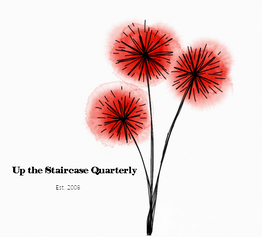Come West and See by Maxim Loskutoff
Hardcover: 240 pages
Publisher: W.W. Norton & Company (2018)
Purchase @ W.W. Norton
Review by Brie Barron.
In his debut short story collection, Come West and See, author Maxim Loskutoff plays with his readers’ perceptions of nature. Not only does each story place nature and environment at the forefront of the plot, but they each also evoke a different facet of absurdity. For example, the collection opens with “The Dancing Bear” which follows a lonely trapper living in the Rocky Mountains of Montana who finds himself sexually attracted to a grizzly bear. In this first story, Loskutoff masterfully operates within the reader’s discomfort, setting all taboo aside, and the reader eventually comes to find themselves reading an integrally suppressed love letter:
I was heartsick. I had grown used to a dull emptiness—such is the life of a trapper in the Montana and Oregon Territories—but this new feeling was sharp.
Desperate. I wanted nothing more than to find the cave where she slept, curl up in her arms, and so, too, dream the winter away. (7)
Loskutoff’s entire collection imparts on the reader a challenge of Western attitudes, the philosophy embodied in its title: the West is not here to be taken, the West is here to be seen. Loskutoff illustrates, with his uncompromising prose and intensely sagacious recognitions of environment, that the new gold rush is experience. This is evident in each character of every story, all of whom seem unmistakably alive, from the isolated trapper in “The Dancing Bear” to the tenuous lovers in “End Times”. Loskutoff tangles their insecurities and confidences in truly fresh narrative ways. Come West and See manipulates frontierism of the West through the impactful lens of modernity and is perfectly visceral. Loskutoff has created an experimental space to understand life in the most human way possible—by entwining the nature of humanity and the humanity of nature.
Publisher: W.W. Norton & Company (2018)
Purchase @ W.W. Norton
Review by Brie Barron.
In his debut short story collection, Come West and See, author Maxim Loskutoff plays with his readers’ perceptions of nature. Not only does each story place nature and environment at the forefront of the plot, but they each also evoke a different facet of absurdity. For example, the collection opens with “The Dancing Bear” which follows a lonely trapper living in the Rocky Mountains of Montana who finds himself sexually attracted to a grizzly bear. In this first story, Loskutoff masterfully operates within the reader’s discomfort, setting all taboo aside, and the reader eventually comes to find themselves reading an integrally suppressed love letter:
I was heartsick. I had grown used to a dull emptiness—such is the life of a trapper in the Montana and Oregon Territories—but this new feeling was sharp.
Desperate. I wanted nothing more than to find the cave where she slept, curl up in her arms, and so, too, dream the winter away. (7)
Loskutoff’s entire collection imparts on the reader a challenge of Western attitudes, the philosophy embodied in its title: the West is not here to be taken, the West is here to be seen. Loskutoff illustrates, with his uncompromising prose and intensely sagacious recognitions of environment, that the new gold rush is experience. This is evident in each character of every story, all of whom seem unmistakably alive, from the isolated trapper in “The Dancing Bear” to the tenuous lovers in “End Times”. Loskutoff tangles their insecurities and confidences in truly fresh narrative ways. Come West and See manipulates frontierism of the West through the impactful lens of modernity and is perfectly visceral. Loskutoff has created an experimental space to understand life in the most human way possible—by entwining the nature of humanity and the humanity of nature.
About the Reviewer
Brie Barron is pursuing an English degree at Montana State University-Billings.

